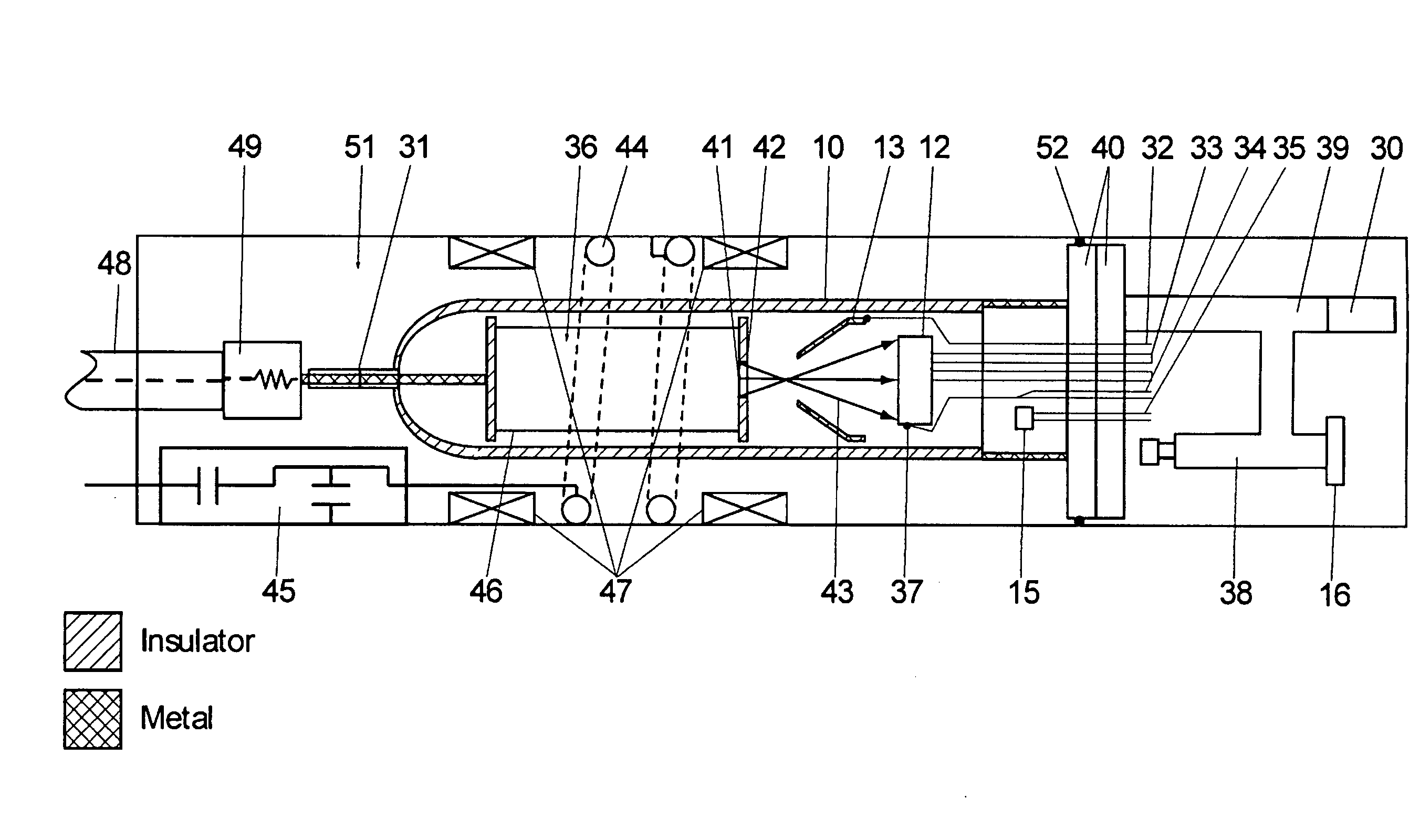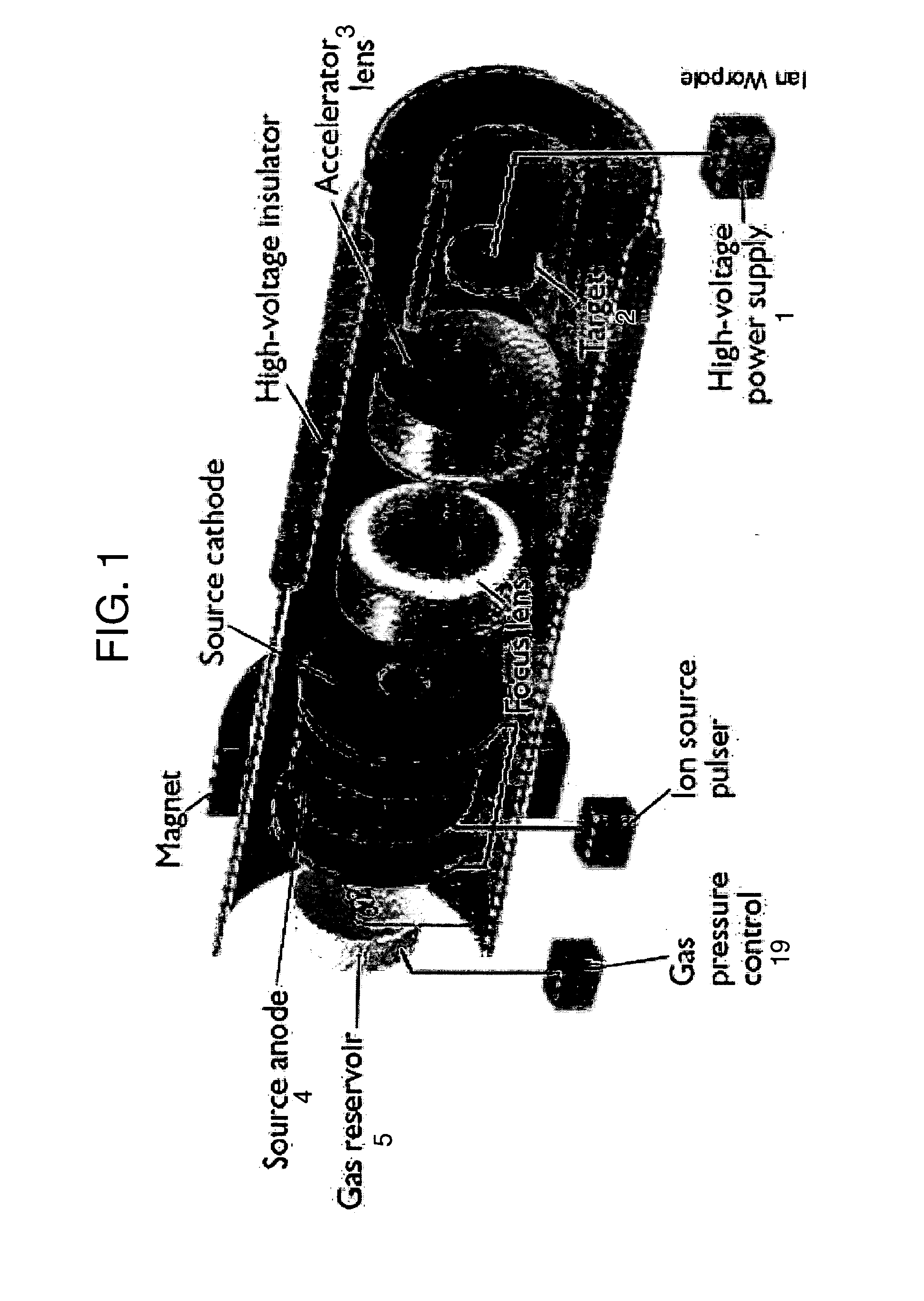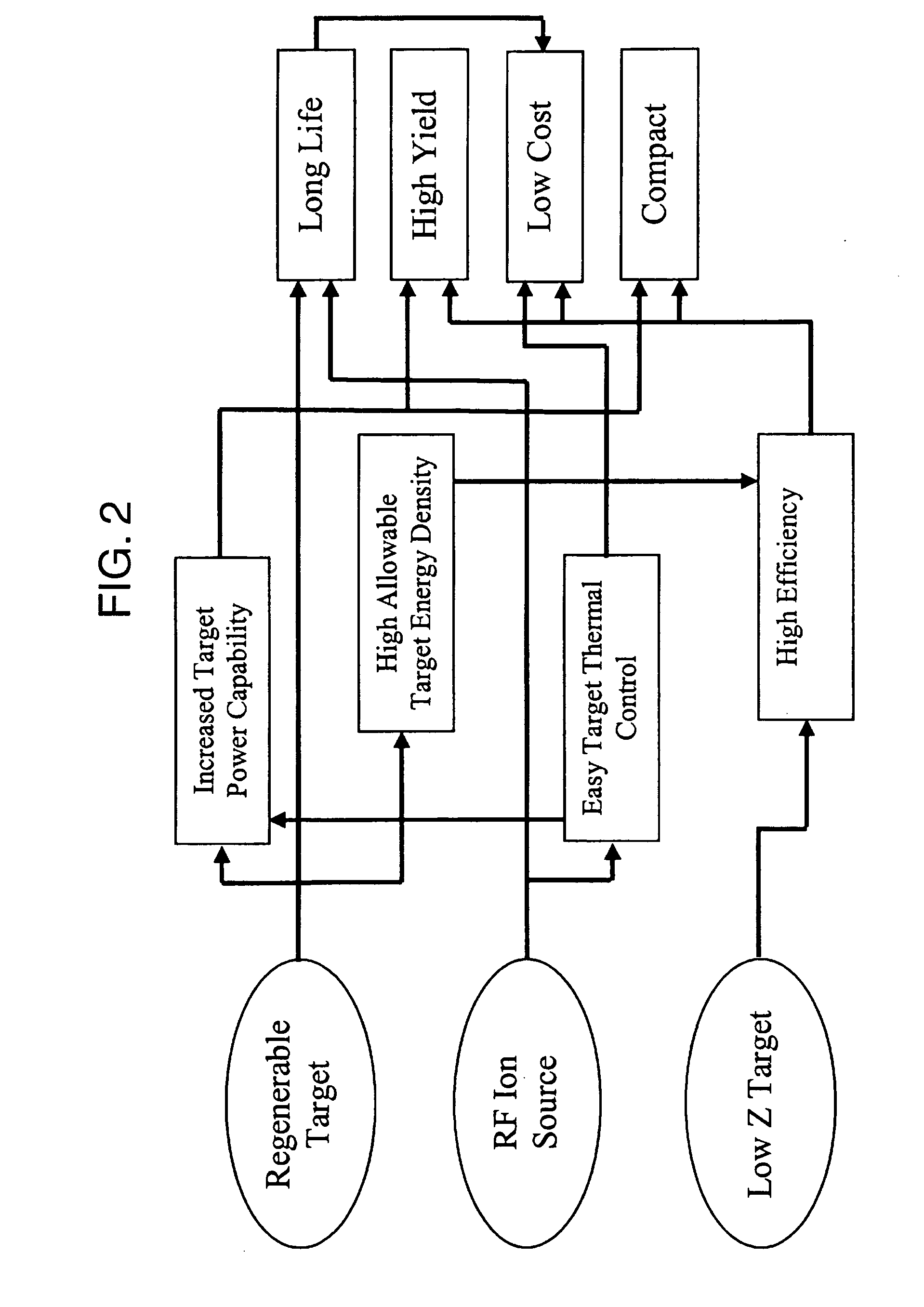Long life high efficiency neutron generator
a high-efficiency, long-life technology, applied in nuclear reactors, nuclear targets, greenhouse gas reduction, etc., can solve the problems of short life, low efficiency, increased scrutiny, etc., and achieve the effect of low efficiency, large size and high cos
- Summary
- Abstract
- Description
- Claims
- Application Information
AI Technical Summary
Benefits of technology
Problems solved by technology
Method used
Image
Examples
Embodiment Construction
[0018]FIG. 3 shows the layout for the “neutron tube” core of a generic embodiment of the invention. A vacuum vessel 10 forms the main structure. Inside are the three primary electrodes: the ion source (anode) 11, neutron-producing target (cathode) 12, and electron suppressor electrode 13. The ion source power supply 14 creates AC, DC, or radio frequency / microwave power depending on the type of ion source 11 used. A non-evaporable getter 15 is used to control gas pressure via heating.
[0019]In one possible embodiment shown in FIG. 4, the vacuum vessel 10 is a sealed tube made of a combination of conductor and insulator. If one end of the neutron tube is at low voltage, it can easily be made of conductive material facilitating fabrication and installation of electrical feedthroughs. Conductors used include primarily aluminum, stainless steel, copper, and kovar. Stainless steel and iron are minimized to reduce gamma signature in NAA applications. Glass, quartz, or alumina (or similar ce...
PUM
 Login to View More
Login to View More Abstract
Description
Claims
Application Information
 Login to View More
Login to View More - R&D
- Intellectual Property
- Life Sciences
- Materials
- Tech Scout
- Unparalleled Data Quality
- Higher Quality Content
- 60% Fewer Hallucinations
Browse by: Latest US Patents, China's latest patents, Technical Efficacy Thesaurus, Application Domain, Technology Topic, Popular Technical Reports.
© 2025 PatSnap. All rights reserved.Legal|Privacy policy|Modern Slavery Act Transparency Statement|Sitemap|About US| Contact US: help@patsnap.com



